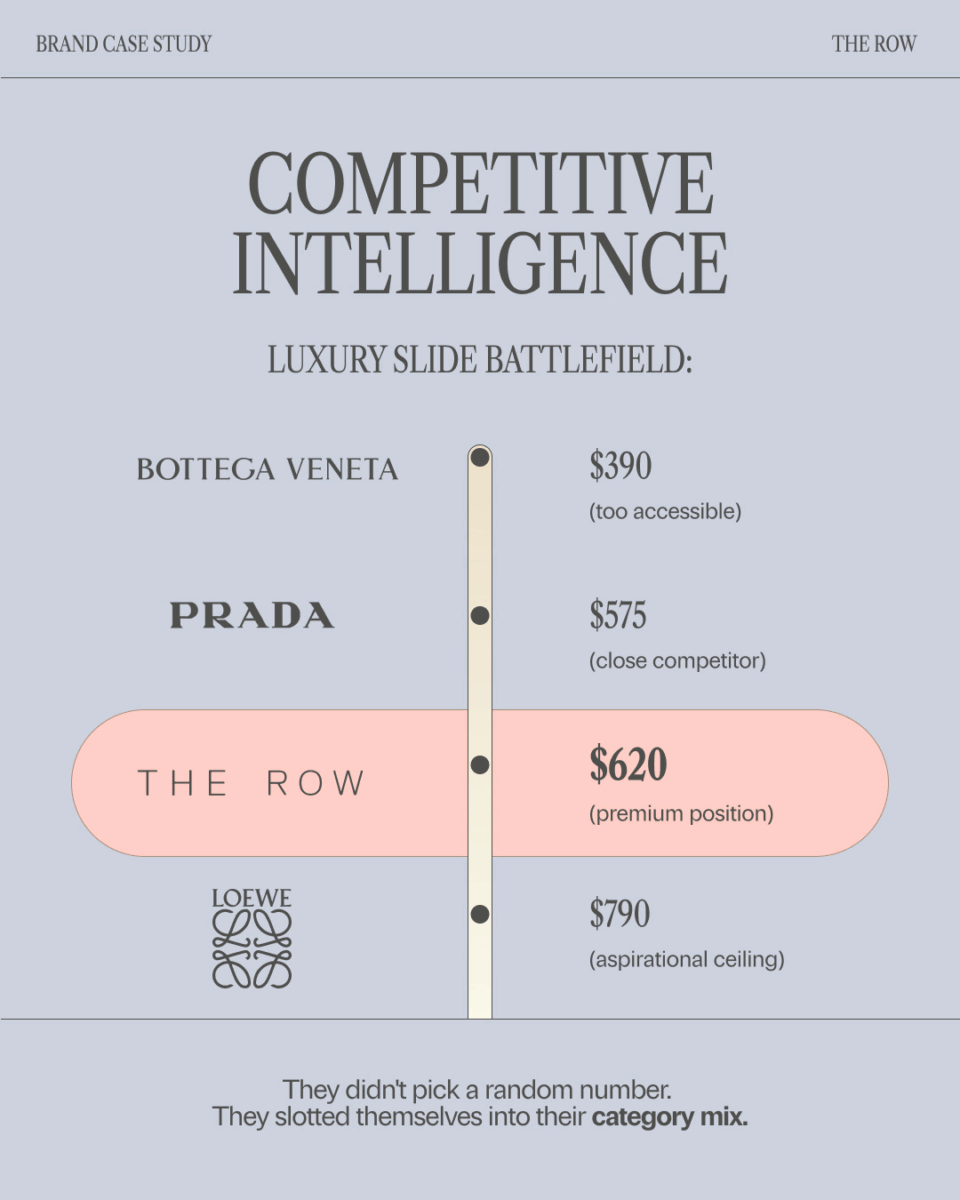The internet lost its collective mind this week when The Row’s $620 rubber slides sold out across retailers. Twitter was ablaze with outrage, Instagram stories were filled with shock, and everyone seemed to have an opinion about paying luxury handbag prices for what’s essentially a shower shoe.
But here’s the thing: The Row didn’t accidentally stumble into this controversy. They architected it.
Scarcity Isn’t a Bug. It’s the Feature.
While everyone was debating whether rubber is worth $620, they missed the real story. The Row didn’t set out to justify the material cost of their slides. They set out to control the conversation around them.
The brand’s strategy is deceptively simple: limit inventory, build hype, gauge demand. By purposefully restricting how many slides hit the market, they created the exact outcome we witnessed—a feeding frenzy that made $620 rubber seem reasonable because it was available.
The Psychology of “Entry-Level Luxury”.
Here’s where The Row’s pricing gets genius: $620 isn’t positioned against Adidas’s $35 slides.
It’s positioned against their own $820 sneakers and $1,090 pumps.
Suddenly, $620 feels like a steal.
This is textbook price anchoring. When your reference point is four-figure footwear, three figures starts to look accessible. The Row created their own context, then invited customers to feel smart for finding the “deal” within it.
Compare this to their luxury competitors:
- Bottega Veneta Slider: $390
- Prada Logo Slider: $575
- Loewe Rubber Thongs: $790
The Row positioned themselves right in the premium sweet spot; expensive enough to signal exclusivity, but not so expensive that they priced out aspirational buyers.

Brand Premium in Action.
Mary-Kate and Ashley Olsen understand something most founders don’t: your brand premium isn’t what you charge—it’s what people are willing to pay for the privilege of association.
The Row has spent years building a reputation for quiet luxury, understated elegance, and insider status. Their customers are buying membership in a very specific aesthetic tribe.
No logos. No flashy marketing. No celebrity endorsements.
The Row focuses on intentionality, restraint, and the confidence to let scarcity do the selling.
What Your Brand Can Learn.
Stop trying to be everything to everyone. The Row succeeds because they know exactly who they are and exactly who they serve. They’d rather have 100 customers willing to pay $620 than 10,000 customers looking for a deal.
Scarcity beats abundance. In a world of infinite choice, limitation feels luxurious. Don’t flood the market; create moments of availability that feel special.
Control your reference points. The Row doesn’t compete with Adidas because they’ve created their own playing field. The question you have to ask yourself is what category are you really competing in?
Let your customers discover value. The best luxury purchases feel like insider knowledge, not marketing campaigns.
The Real Troll.
The internet called The Row’s slides a “troll,” but the real troll might be on us. While we were busy debating the price, they were busy selling out.
In a market saturated with loud branding and aggressive discounting, The Row proved that restraint still sells. They didn’t need to convince anyone their slides were worth $620. They just made sure the right people could find them—and that there weren’t enough to go around.
What’s the most you’ve ever paid for something simple? I’m curious– leave it in the comments below.
xx,
Camille
P.S. If you want to learn my complete approach to Social Media & Branding, access my Social Media Masterclass here OR Sign up for my monthly social media cohort (DM me on Instagram).